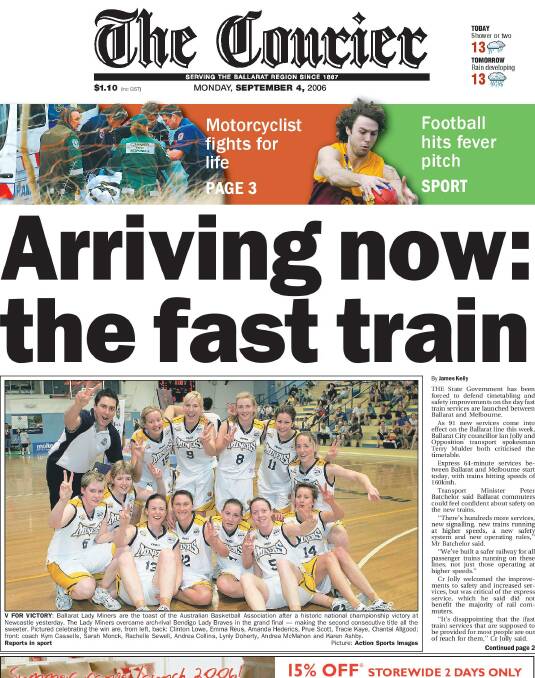For commuters caught on another late train, fretting aboyut an appointemnt or a rebuke from the boss it is oftenm hard to see the big picture. TGiven the appaling punctuality targets which on the Ballarat lines have been some of the
Subscribe now for unlimited access.
$0/
(min cost $0)
or signup to continue reading
It is almost ten years to the month since the former Bracks’ government proudly launched the Fast Rail to Ballarat and almost achieved what was unthinkable only a few years before – the under-hour journey to Melbourne. It was also early in September 2006 that a morning train came very close to breaking the benchmark number and there was a radiant sense of the possible. Fast forward five years to 2011 when the morning express train got the axe and commuters seem to have been looking at time blow outs in the timetable ever since.
While anecdotes exist of historical trains breaking this touchstone, it is the seeming retreat from the ideal that seems to most frustrate commuters.
Sadly with a planned new timetable for next year there is again no morning express service at this stage. Most of the faster services come in at about an hour and ten minutes which in itself is no disaster but it is the symbolic value of that hour figure that could mean so much to a growing regional city.
Former premier and Ballarat boy Steve Bracks said himself in 2014 Ballarat should still be aiming for a 60-minute V/Line train service to Melbourne
“I think it requires this more than anything, a political will to commit to a 60-minute service then the whole government will get behind it and see that it happens,” Mr Bracks said at the time.
“I think that commitment comes first and then the resources and support will come second.
The Courier is not advocating this is a simple matter. We are more than aware of the extraordinary growth to the west of Melbourne in those ten years alone. We are cognisant of the complexity for the solutions to make it possible. Easing of congestion at the Southern Cross end will not only involve more clear tracks at the station but no less than four lines as far as Melton. This will completely divide regional rail traffic and the future prospect of an electrified line out into the booming west. Then there is added rolling stock and demands from other key corridors like Geelong to be challenged.

The list of asks is long and the path difficult but setting the long-term goal of a sub-hour commute may just be the symbol to bring the shine back to a rail service that has had better days and give the vim back to a city set to thrive on its connectivity.
Breaking the sound barrier, the four minute mile, Everest without oxygen; they were all seeming impossibilities once.

